

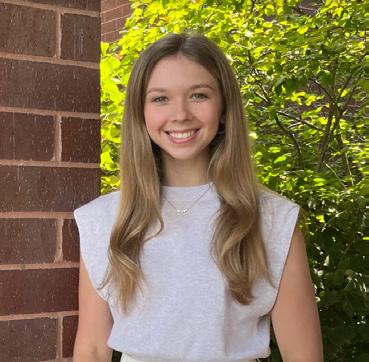

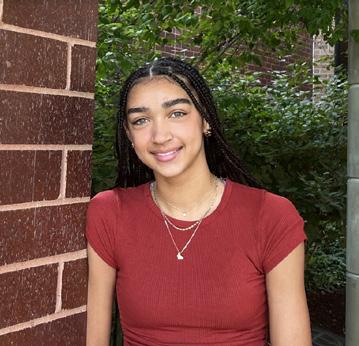

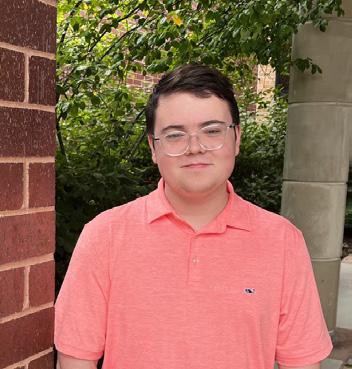
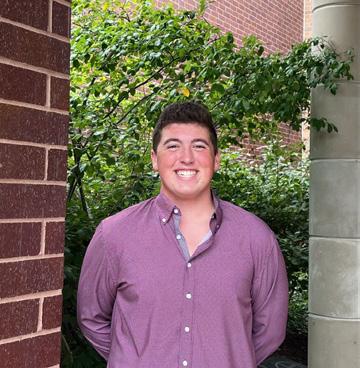
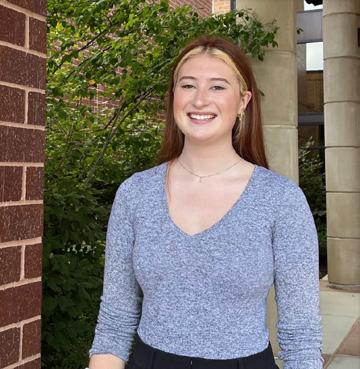










CHRISTINA ENGLISH, SENIOR
TARYN CUNNINGHAM, SOPHOMORE
AUDREY ROHLFING, SENIOR
EMMA FAIRCHILD, SENIOR
EMILY GRIEGE, SENIOR
AHREN MUEHLEISEN, SENIOR
ALYSSA GRECO, SENIOR
JOEY FENTRESS, SOPHOMORE
STAFF
RAQUEL HERRERA , SOPHOMORE
ANDREW CAHILL, JUNIOR


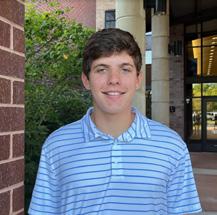


JACK NELSON, JUNIOR
BEN ATKINS, JUNIOR

CORINNE PLUMB, JUNIOR
STAFF





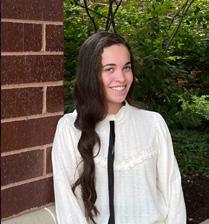






NYAH KIM, SENIOR
MIA SCHEULEN, JUNIOR STAFF
LAILA ANDERSON, FRESHMAN

LUCY KIM, FRESHMEN
JIMMY MACDONALD, SENIOR
NEVAN SHIVELY, SOPHOMORE

FISHING IN THE CITY PG. 6-7
GUEST WIFI NOW PASSWORD PROTECTED PG. 8

BACK IN THE DAY... PG. 9
THE ASSUMED USELESSNESS OF SCHOOL PG. 12
A HIDDEN GEM IN THE CURRICULUM PG. 10-11
A WORLD WITHOUT COLLEGE PG. 13
SENIOR SIGNERS PG. 15
CATS ON ICE PRESEASON PG. 16

THE ISSUE WITH CLUB SPORTS PG. 17
A SOCIAL MEDIA ATHLETE PG. 18
GREATEST WRESTLING TEAM IN HISTORY? PG. 19
By now, everyone at Westminster has experienced the effects of life without an open guest wifi network. Students and teachers alike are limited on their personal device use during the day now (even at lunch and after school when this usage is allowed), and people caused quite a fuss over this drastic change.
Westminster’s technology directors, administrators, STUCO, and Student Life receive daily feedback emails complaints that people can’t call their moms or wouldn’t have a way to communicate with loved ones in an emergency. These complaints are valid, but sometimes they can be a bit exaggerated to prove a point.
Still, it is completely understandable that teens who are used to their tech working even when wifi is off feel a shock to the system when they have no access to their devices. Text messages lag, social media won’t load, and it seems the world might just be ending. People who use their computers for school-related work when iPads miss the mark are left hanging too. A lack of connection in a world so heavily dependent on it feels (understandably) earth-shattering.
Signed,
The one thing that does not work to fix the struggles is complaining. Every teacher, every administrator, every tech person, and every student council officer has heard EVERY argument and complaint imaginable about the guest wifi. If they hear more chatter about it, they are much less likely to do something about it (even though it would never be changed in the first place). Venting at first is normal, but continuing to air out complaints to anyone who will listen is perceived as rude and unappreciative.
Take the time in this upcoming holiday week to reflect on what you should be thankful for. Yes, it’s cheesy, but Thanksgiving is a time to take stock of the privilege you do have and assess what to let go of. Take a breath, get away from school, and think about how miniscule the idea of connecting to a guest wifi during the day really is. Yeah, it is annoying sometimes. But perspective is key, and complaining about something that has a 0% chance of being changed is not something to continue dwelling negatively on. It does not help you, and it certainly does not help the people who are tired of hearing complaints all day long.
800 News and Anna Grace Likes, Editor-In-Chief Contact us at 800news@wcastl.org if you have any ideas, questions, or concerns.
Every November through February, the Missouri Department of Conservation periodically stocks urban lakes with Rainbow Trout to provide opportunities for urban fishing. These trout provide a fun opportunity to get outside and a tasty treat if you are lucky enough to catch one. Try these 3 lakes for a chance at catching Rainbow Trout through the Urban Fishing Program.

Lake #1: Suson Park
Around the intersection of 141 and Interstate 55 in South St. Louis lies Suson Park. The department of conservation stocks rainbow trout in Island Lake and Carp Lake in Suson Park. While this lake is a popular, well-traveled location, it still has some good fishing. For the best fishing, try getting there early in the
Fishing (5 being best)
Fishing Pressure (5 being least pressure)
Accesibility (5 being eaisest to access)
morning to beat the crowds. A lot of the fishing pressure comes from the retired community, so getting there early gives you the best chance to hook into a trout. Try some Berkley PowerBait® or a silver spoon for a lure.
Lake #2: Busch Wildlife
Busch Wildlife lies across the Missouri River in St. Charles and has over 30 lakes that are stocked with fish by the Missouri Department of Conservation.
Fishing (5 being best)
Fishing Pressure (5 being least pressure)
Accesibility (5 being eaisest to access)
However, lakes 3, 21, 22, 23, and 28 are stocked with rainbow trout in the winter. If you want to have better fishing, but no dinner, try lake 21. Lake 21 is a catchand-release only lake, but is stocked with almost double the amount of fish than other lakes. . If you are hungry, try lake 3 or 28. These are comparable to other St. Louis Area lakes in the number of fish stocked and offer a great opportunity to catch some dinner. Try a rooster tail in yellow or rainbow to get a trout at the end of your line.


In the heart of downtown Ballwin lies infamous Vlasis Park. Vlasis contains a playground, fairgrounds and two lakes. The bigger of the two is periodically stocked with rainbow trout during the winter months. While it gets a lot of pressure from local anglers, it still offers opportunities for good fishing. While at Vlasis, try yellow PowerBait® on a small hook with some weight. The trout are finicky, but are able to be caught. INSIDER TIP: Under the dock that extends into the lake, there is a deep hole that holds lots of fish. Try casting in there for a big one!
The Urban fishing Program can be a great way to introduce a new angler to fishing, or to cure cabin fever for the experienced angler. While it is never a sure thing to catch a fish, It is always a fun time to be out on a lake. If you are interested in going, you have the best chance when they have recently stocked fish. To find out when they stock, call the Fish Stocking Hotline at 636-300-9651.
Fishing (5 being best)
Fishing Pressure (5 being least pressure)
Accessibility (5 being eaisest to
Students were not expecting to come back to Westminster from Halloween weekend with the beloved guest wifi locked up with a password. The buzz around campus over the past week has largely been about what the password is, how to gain access to it, and why things changed.
Students were shocked that their phones, smart watches, and personal laptops were running slow when they walked back into the beige hallways of Westminster. There were a few students who felt indifferent about the situation regarding the guest wifi.
“I have never used the guest wifi so I personally do not have an issue with it having a password but I have seen a lot of frustration around this,” said Emily Disper, junior.
The majority, though, were either angry or frustrated.
“I am completely against the new password needed for the wifi,” said Julia Martin, senior. “If my mom needs to tell me something and I don’t get the message until it’s too late, I will blame WCA wifi.”
Even though most students are either confused or angry about the fact that the guest wifi now has a password, they do not realize the true reasons why.

From a technological standpoint, Kent Kehr, Director of Technology at Westminster, said that “with an open network, everybody was getting onto [it] immediately, so [there] was an issue with density [...] and bandwidth.”
He went on to define this “density,” explaining that there were around 1,000-1,500 different devices using the guest wifi network, and they couldn’t figure out how to manage these unknown devices. Because these phones, watches, and other devices were coming onto the network in large masses, they couldn’t control the network and make it work to the best of its ability for school use.
What Kehr meant by bandwidth was that “all of the devices [were] pulling down updates, automatic updates of apps in the background, and all of that was clogging the network.” He went on to say that it was mostly Apple products that had these specific updates going on and that the bandwidth becomes exceptionally bad when Apple offers an automatic update that day.
Density and bandwidth were both factoring into the main reason that the guest wifi now has a password: to be able to learn better. Kehr stated that “you’ve got to have less devices in [the] classroom attaching to the access point, and you’ve got to have a little bit of a cleaner path to the network so they have a little bit faster access.”
The personal Apple devices that were connecting to the guest wifi network were blocking this path to the access point, slowing down the network that was being used by students’ school iPads for learning purposes and potentially even slowing down the network that the teachers were using.
Something that was shocking to hear was that the guest wifi was never meant to be made public for everyone to use. Kehr explained that one of the reasons that the guest wifi was made public was because of COVID-19.
“We needed something quicker for people when we walked onto campus and had to do zoom.” Since zoom video chatting requires ample data, it makes sense that there needed to be another network open so that the technology could run smoothly.
The other reason was due to new iPad orientation: “At the beginning of the school year when we are issuing new iPads, […] it’s just easier for an iPad to connect if [it has] an open network. It was supposed to be temporary and then closed after a few days,” said Kehr.
While it is a major, upsetting change that students don’t have access to wifi for phones, apple watches, and many other devices (especially for high schoolers during lunch), it’s important to understand how these devices affect the learning environment and how much they diminish productivity in schoolwork.
 Anna Grace Likes Editor-in-Chief
Anna Grace Likes Editor-in-Chief
Any junior or senior knows that, when going on a college tour, they always share some information about the dorms. There’s usually two general options: a modern or a community-style dorm. The guides rave about the spiffy amenities in the newly-built modern dorms, but then there’s the ancient, dusty, community-style dorm building. Surprisingly, though, on every tour I’ve been on, the tour guides always say that community-style is more fun than the modern option. Students bond through seeing each other on the way to the bathroom each night and being forced to interact with everyone on their floor. This is the best analogy for describing the difference between the Westminster at 800 Maryville Center Dr. and the Westminster of the pre-2011 past.
At the old campus, everything was tightly compacted. One long hallway spanned the entire building, and teachers all shared a classroom with at least one “roommate.” In order to go upstairs, there was one main stairwell where everyone had to pass each other. It was a similar atmospere to a community-style dorm. Now, on the school’s beautiful, newer campus, it’s nearly impossible to see everyone every day. “The faculty is still really close, but the biggest thing is that we don’t see each other,” said Chris Knerr, AP European History teacher.
Becasue of the school’s size and layout, it is now more of a challenge than it was before to have meaningful relationships between the faculty. Some teachers have bridged this gap by forming lunch groups and before-school breakfast chats, but these have to be planned, not forced through bumping elbows in the hallway or sharing a classroom. “There’s nothing efficient about relationships, and that’s a good thing, but what we gain in efficiency with having our own classrooms and teachers lounges, we lose in closer relationships,” said Dan Burke, 11th/12th grade principal and English teacher.
Don’t be mistaken–the school needed to evolve with the times and morph into something that provided a higher quality experience for everyone. But there’s an aspect of the old campus that seemed to be homey, quaint, and rustic–and that was lost when the polished, new campus was introduced. “The way I would describe it is that it was a lot less button-down there,” said Knerr.
When describing the old campus’ wall-mounted AC units, Knerr lovingly described them like “an old, beat-up Honda–the thing’s total crap on the outside…but it still hums.” “... and you can’t imagine giving it up,” added Luke Davis, Bible Dept. Chair. This notion can seemingly be applied to the
old campus as a whole. It was not the brand new building on 70 sprawling acres, but it was loved and missed once it was gone.
The aspect of the old campus that many teachers miss most is the lighthearted, mischievous fun had by the faculty. Projectors were tossed in fish tanks, clocks were broken with tennis balls, lights were turned off on teachers in the bathroom…the list goes on.“We tried to fill the fish tank with every foreign object we could [...] and lo and behold all the fish died,” said Knerr. “You had the capacity to do really stupid things in a short period of time,” he added.
This stupidity was accelerated by the closeness. But another benefit of this tight-knit community was the way faculty were able to so intentionally know and support one another in times of need. “Our son, Jordan, died at 19 months of age, and the community just full-on pulled around us. Within a couple of days everyone had raised money for funeral expenses,” said Davis.
It isn’t that this wouldn’t happen today…I can think of several instances as a student where I remember the community coming together to serve someone who needed it. The atmosphere there and the way teachers knew each other more intimately was simply a different time.
“I think the world changed around us,” said Burke, describing the change in culture and technology that occurred around the time of the move. Before, emails were a fairly new concept, and teachers like Knerr and his partner-in-crime (former Westminster teacher Warren Smith) used this to their advantage to send mass-email pranks to the faculty. Most did not quite know how to use technology for its intended purpose, and out of that grew a community that pranked, hand-delivered notes, and talked in-person often.
“We used to have faculty devotions in a classroom, and now faculty devotions are in the theater,” said Ken Boesch, US Government Teacher. “And everyone’s got 10 seats between them,” added Scott VonderBruegge, Director of Educational Technology and Curricular Innovation. This paints a picture of the gradual change from old to new. While the new campus provides a space where students can explore their interests in a way the old campus could have never provided, some closeness has been lost along the way.
Westminster teachers provide stories and insight to describe the atmosphere of life before the shiny, newly-built campus.(L-R) Scott VonderBruegge, Warren Smith, Dan Legters, and Chris Knerr pose in their Spirit Week costume at the old campus. Image courtesy of Chris Knerr
All students at the academy are required to take the basic core classes. Seventh to twelfth-grade students go through year-long classes that entail English, history, science, math, and an elective of choice. The electives range from drama, stem, business, and an art credit. People tend to take the same ones as everyone else, which can become boring. After my sophomore year, I realized I would be taking my fourth art credit. I became bored with these choices; it felt like my friends at public school were taking crazy cool classes like fashion design and jewelry making. That is when I finally found my favorite class at Westminster: AP Art History.
In my sophomore year, I was called out of class to create my schedule and told I needed to take an elective course. I chose to replace it with a study hall but received an email concerning the art history class. This class is only offered every other year, and sometimes it is cut because not enough people sign up. The only way I learned about this class was through an email, so no wonder students have no idea about it.
I decided to give it a shot and signed up for the class; I had no idea what I was in for. I love art, and I always have, but I needed to be gifted with artistic ability or a lot of knowledge about history. The good thing for me was that this class did not require artistic ability, and I didn’t have to know anything about art.
For those who dislike art, I still encourage you to take a look at this class. A lot of the knowledge I obtained throughout this year-long class could be applied to many of my other classes. The various units we learned about, like Greek art, Egyptian art, and the Renaissance, gave me knowledge of history that could be used in my bible class. I did intense research on the reformation during the Renaissance unit to better understand the art. When the Martin Luther unit in bible class rolled around, I already knew what was happening. History is a subject that tends to bore me, but learning about the history of art is an alternative way to see the past. In this class, you learn about the art these people and societies created, but through this, you will gain an understanding of their way
of life, history, customs and culture.
The workload of art history is intense, but it is manageable. In each unit, we are given a reading guide for the art pieces we study. Either we talk about them together in class, or you research them independently. You must write down five important facts about the art piece and draw a picture to learn it better. These assignments are quite easy with the help of https://smarthistory.org/. This class teaches a lot of independence and studying skills you will need to have in college. You are responsible for researching the topics you are learning about so you can talk about them in class. Another assignment in the course is a per-semester project. During this project, you will research an art period, make a presentation, reading guide, and a quiz. You get to play teacher for the day!
Hard work in this class is rewarded with fun activities on block days, watching movies, and even a trip to Chicago. This class trip to Chicago is a weekend-long getaway to visit the Chicago Art Museum. The Chicago art museum has a lot of art on the “250.” The 250 is a long list of all required art pieces to know for the actual AP test. 250 art pieces seem like a lot, but they are not as intimidating as they look. You take the time to learn these 250 pieces over the entire year so that you are not trying to memorize all 250 at once when May comes around. This class has personally taught me how to improve my study skills. I have learned much more efficient ways to absorb material through this class.
This class is among the most special ones Westminster offers. Not only is the material of the class great, but so is the teacher. Mrs. Dierking is responsible for teaching AP Art History.
“I think since I’m part time and it only runs every other year that might contribute to [the lack of attention it gets]. Also it’s kind of a random subject. I think my best way to draw attention to it is by word of mouth. If students in the art history class are talking about it to their friends that helps. Also I try to identify students in my other classes who might be interested in it and talk to them about it.”
Interested in ancient history, religion, and art? Take AP Art History!
A lot of students are unaware of Westminster’s Art History course. Electives like this could be promoted better when making course selections, but the best way to go about making people aware of this class is talking about it. As a former student in this class, that is something I want to help with, and make sure students get the opportunity to hear about it because this class holds a lot of useful information.
“Art History is really the history of us. Where we came from and what happened in our world. There are so many themes in art history that we are still grappling with today. For example- themes of power and political propaganda, how minorities (or non western cultures) are portrayed, and the effects of war. We still ask the same questions and react to events in the world around us the
 - Emily Dierking, Art Teacher
- Emily Dierking, Art Teacher
Art History Students both learn about snd create art. Image by: Alyssa Greco
same way that artists did 200 years ago,” said Dierking.
History teachers constantly tell their students that it is important to study history so it does not repeat itself. Art History is important because it allows students to learn about this history in an alternative manner. Studying art shows a different perspective of history, it is the perspective of the people. Art captures emotion far deeper than a textbook could, and demonstrates how the people of said time period were processing the tragedy around them. History is more than just major events, it is also about the culture and customs of these civilians that were lost with time.
“Students learn how to talk about the visual world around them. Since this is a college level course they learn study skills that will be useful to them in college. I think the biggest benefits are expanding their knowledge of dif-
ferent cultures, and making international travel more meaningful.”
Art teaches people how to interpret their emotions on a deeper level, and allows the viewer to feel seen on a certain level. Understanding cultures of different countries and people opens up a whole new world for the student. You understand how to interpret the meaning of the art rather than the appearance of it. These skills help students become more intellectual and perceptive of the world around them. Art History is not only super enjoyable but it expands the minds of young students and prepares them for the real world. From the information you obtain throughout this year-long class and to the study skills you gain, I highly recommend taking a chance and signing up for AP Art History.
”
is really the history of us.”
It seems as though after high school, there is only one option: college. Any other course of action is less desirable, and less discussed. At Westminster, it seems like college is a predetermined course of action for all enrolled.

College is a wonderful opportunity for all sorts of things, not just getting a degree.
“I think college is a great opportunity to expand your social circle and start living by yourself,” says Deborah Kim, junior.
However, college costs have been on a steady rise for a while.
“Between 1980 and 2020, the average price of tuition, fees, and board for an undergraduate degree increased 169%,” according to a report from the Georgetown University Center on Education and the Workforce.
Though college is a valid path out of high school and into the world, it might not be best to delve into it immediately, or for some people, at all.
The first option to explore is a gap year. A gap year is simply a break from school that can be taken before, during, or after college. It is a chance to explore passions, learn new skills, meet new people, experience new ideas, prepare for college or a job, or just enjoy yourself.
“I took a gap year because I would have gone in undecided if I want to college, and it seems like a waste of money to go and not know what I want to study. I also wanted to travel before I did another 4 years of school,” says Reagan Beachy, Westmin-
ster senior who’s taking a gap year.
Most students that take a gap year do so to go on mission trips, travel the world, get some experience at an internship, or some sort of a combination. Many gap year programs exist to facilitate such activities.
- GVI, gap year organization
- Reagan Beachy, Fromer WCA student taking a gap year.
“I’m leaning toward the Vanguard gap year, but I’m looking into more travel based ones as well,” says Reagan.
In addition, taking a gap year might make colleges and universities more eager to have you, if the gap year is structured and productive.
“A gap year can make your application shine, showing evidence that you have extracurricular interests as well as a solid foundation made up of personal and professional skills,” according to GVI, an example of a volunteer organization one might enroll in during a gap year.
“
“It seems like a waste of money to go and not know what I want to study,”
There are many paths to life outside of college that aren’t as popular.
“
“A gap year can make your application shine,”
Amount 60,000 55,000 50,000 45,000 40,000 35,000 30,000 25,000 20,000 15,000 10,000 5,000 0
Public Private Nonpro t Private For-Pro t
Taking a gap year might not be the perfect move, though.
“If you take a gap year, you may find your [federal aid] amount changes,” according to Go Overseas, a site dedicated to discovering and exploring gap year programs.
It all depends on what is done during the gap year. If the college looks at the gap year and sees little productivity, they will find that student less favorable, and if the gap year is very productive, the college will find that student more favorable.
Overall, it is a break from the rigorous, graded academics of the education system, and a chance to reflect on yourself, and what is the next best step in life.
Another option that is often overlooked is vocational school, or trade school. Instead of being educated on general education or liberal arts, trade school curriculums offer dedicated training in a specific, skilled vocation. Trade school is also much more affordable than your regular college.
A private nonprofit college costs an average of $37,600, according to the National Center for Education Statistics. That adds up to $150,400 for a four-year degree, which is just about impossible to pay out of pocket for. That means many college graduates will have to take out loans, and those loans have interest rates, so students will have to pay even more than that.
Meanwhile, trade school costs from $5,000 to $15,000, in total. Not only that, but it typically only takes two years.
These vocations include construction jobs such as plumber, electrician, carpenter, industrial jobs like welder and mechanic, and even jobs you might not expect, such as IT work or architectural technician.
Many of these jobs are needed everywhere, like electricians, so job security is not much of a worry. Salary is not a concern either.
A tradesperson can earn 46k to 70k a year, according to talent. com. Of course each trade job pays differently, but they all pay fairly well, especially for a job without a college degree.
Trade jobs aren’t the most glamorous, but they are always needed, and it isn’t very expensive to get the required education.
Another untraditional path out of high school is one taken by a student named Charlie Baden, a student from another school in the St. Louis area.
“I am a part of the St. Charles County CAPS program, specifically a part of their technology solutions,” she says. “Basically I go here for half the day, rather than normal school, and learn business-like professions and techniques relating to technology.”
The St. Louis Center for Advanced Professional Studies are nationally recognized, innovative high school programs. Students are fully immersed in genuine work culture, to solve genuine problems, to gain real work experience.
“I wouldn’t say the program itself is a college alternative. But what I’m doing with it is,” says Charlie. “I’m going back next year for a full year internship with a company, and that can lead to a full time job in the higher ups right after high school,” she elaborates.
There is no set-in-stone course of action to take out of high school, or into the real world. Some people get lucky and get rich young, and never even have to worry about getting a higher education. Other people have to fight as hard as they can. But no matter what, there are a thousand ways to approach life.
Students find themselves feeling miserable when having to wake up at 6 am each morning, arrive at school, sit at a desk, and listen to lectures on seven different subjects until 3 pm. School can be seen as useless for the future, especially when discussing certain school subjects that a person might claim they will not pursue in their later life or career.
In the 1800’s, education had an entirely different connotation. The idea of educating children was a rarer concept. Typically, families needed their children to help with the harvest or at their farms in order to feed themselves. Education became a privilege for all. Despite the extent that families had to go to in order to receive education, such as walking 5 miles, sacrificing helping hands, the crowded rooms and single teacher, school was still greatly valued.
After centuries of this repeated, systemic, and rigorous structure, students have lost interest in being educated. Feelings of boredom, exhaustion, and unconcern now dominate interpretations of school. Instead of it being seen as an opportunity for growth, school is seen as a prison where students are unable to express themselves. According to San Franciscan former public school teacher, writer, and lawyer, Gail Cornwall, “students are bored from a third to half the time they spend in school [...] One survey of high school dropouts found that almost half reported giving up on school because of boredom” (Cornwall).
Most students wonder, what could be the point in learning these subjects?
Subjects like history are said to be able to provide students with some sort of background that could help them in future situations or circumstances. According to the Department of History at the University of Wisconsin-Madison, “studying history helps us understand and grapple with complex questions and dilemmas by examining how the past has shaped (and continues to shape) global, national, and local relationships between societies and people.”
Math and its many branches may not be used later in life but it could encourage systematic thought and close thinking. According to the Department of Mathematics at Vanderbilt University, “by studying math you develop analytical skills and an analytical attitude.” After years of learning math, a new cognitive and almost automatic way to break down problems and divide them into steps is created and becomes second nature.
The effectiveness in taking a course such as English can be a controversial topic. While the various amounts of literature and dull novels cause immense boredom, writing becomes useful in many areas of life. Writing can be useful not because an individual might write essays in the future, but because it can teach students to defend their arguments, have clear communication, and refine their ideas.
Oftentimes, the sheer amount of different subjects distracts from the broader picture. Students might focus on the subject alone and their dislike for it. Instead, when considering the bigger picture, school could create flexibility and build a skillset that would provide stability. School is more about conditioning and not necessarily about learning the topic itself.
Education can be useful and can also not be. This never ending and almost insoluble argument seems to depend on the student themselves. Education and its difficult system have not changed over the past centuries, but the way students approach it has definitely changed.

Do school subjects benefit us in the future?
““Students are bored from a third to half the time they spend in school.”
- Gail Cornwall, San Fransican writer and lawyerThe never-ending argument over school’s usefulness. Image by: Raquel Herrera
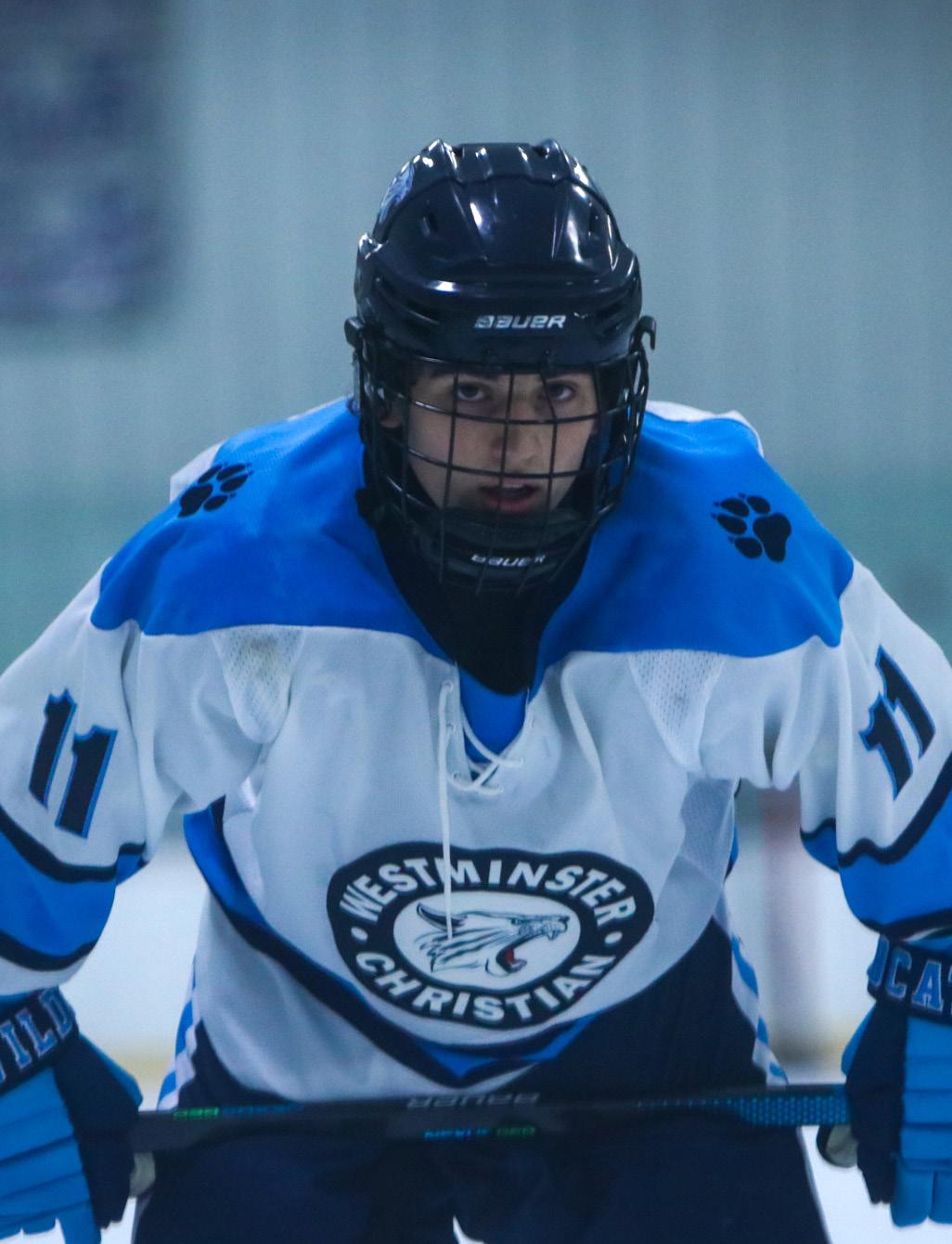


The Wildcats have a very small roster this year and almost didn’t have a team due to the few hockey players that attend Westminster. Six seniors graduated last season and only two freshmen joined the team this year. Mid States hockey has a pool of players that attend high schools that do not have hockey teams, or players that did not make the school’s team. Since Westminster has so few students that play hockey, they were able to take players from the pool to have enough players for a team. Seven of the twenty players on the roster are not students at Westminster.
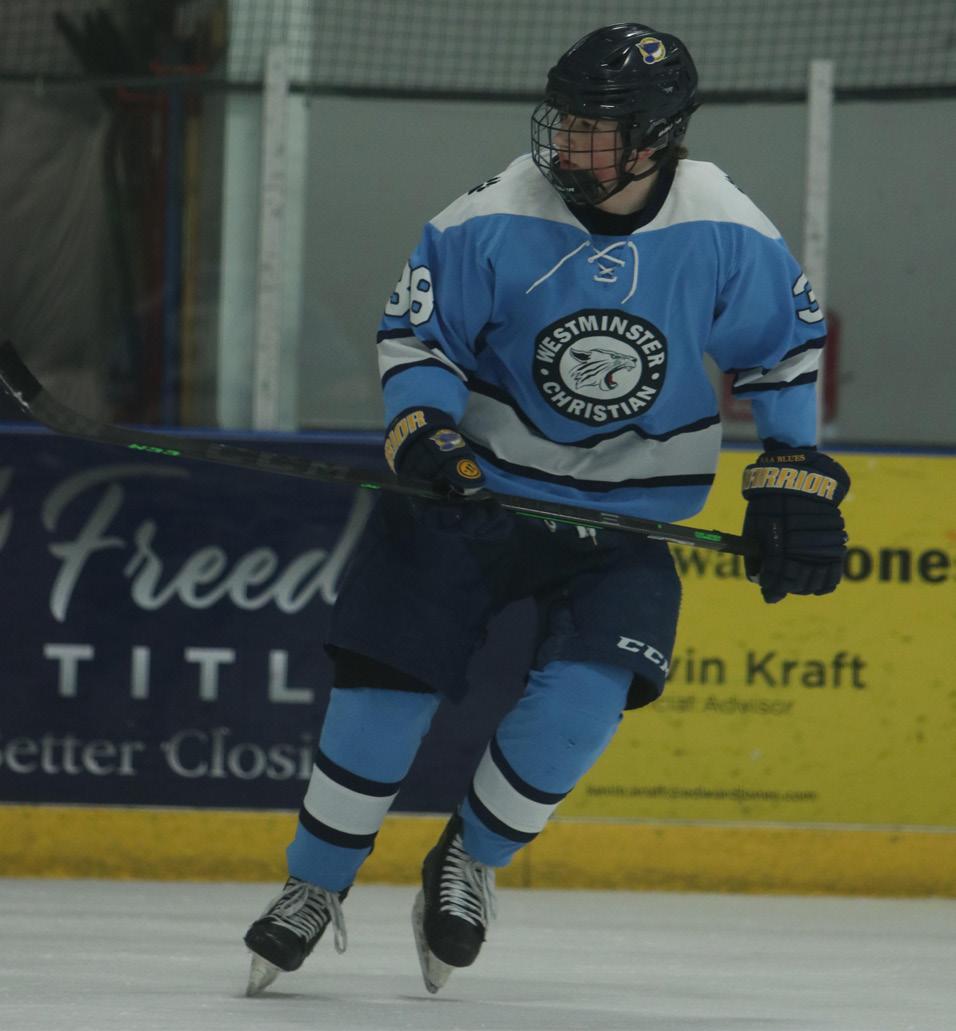
“We lost a lot of seniors last year, and now this year with only two (one of which being a goalie), the lack of seniority for the underclassmen will take a little toll. I am looking forward to leading the team this year and hopefully teaching some of the new freshmen how to give that team the energy we need for next season.” Said Drew Gingerich, senior Last year the team finished with a record of 109-1 finishing just above .500. Caleb Bross was the core of the offense. His presence will definitely be missed this season as he contributed to most of the goals scored last season. This year the Cats will be looking toward junior Joey Morici to be the go to guy on offense. Joey is a power forward with good hands that can make things happen in the offensive zone.
“I think I will be able to help lead our offense to success this year. And obviously this year is going to look a little different from last year. We are a much younger team and lost a lot of seniors this year.” said Joey Morici, junior when asked about his role on offense thisseason.
The defense also lost heavy hitter Zach Kilgore who went on to play at the University of Arkansas. In his time, he heavily contributed to the offense, and was the heart on the defensive end. The Wildcats do not have anyone that has the size of Kilgore that can put up big hits. This season Logan Swenson will be leading the defense. He will have some big shoes to fill after Zach Kilgore graduating, but he has the skill set and knowledge to be able to excel this season.
“I think that we will need to play smarter as a team, especially the more experienced guys. I think that leading the defense this year will be all about showing the newer varsity guys how to play smarter with less time to make decisions on the ice than they are used to.” said Logan Swenson, junior.
This year the Cats only have two seniors and six juniors on the team. Being a team that is primarily underclassman, the cats are lacking experience. High school hockey is a very different game than club hockey because of the wide range of skill levels, and it is a hard adjustment to make especially for the smaller players that have to play against older kids that are much bigger than they are.
“Although we had a slow start with our first game of the season and we are a very young team, we have a lot of potential and we are hoping to grow every game and compete with every team we play.” Said John Schweppe, junior
If the Cats can generate power with their young team, they will have some success this season, but they will probably not reach the level of success that they had last season with the previous senior heavy roster. It will be an interesting season as the cats try to navigate their schedule with a very different team than they’ve had in the past.
” We are a munch younger team and lost a lot of seniors.”
-Photo courtesy of The Foundation
What should you expect from the hockey team this season?John Scweppe looks up for a pass.
Athletes who have a desire to continue playing in college have some things that are almost necessary in order for that to happen. Outside practice and commitment is something that is 100% necessary in order to succeed: playing club. A lot of athletes dedicate themselves to a club for practice and training, but how much do these clubs really do? Using baseball as a reference, a club will usually have a few teams for each age group. The Club usually has what’s considered their “top” team. The so-called top team is the team that will have the most amount of talent or skill. This is the team that the organization will want to have on full display for college scouts and coaches to watch. Because of the amount of talent and experience this team has, coaches tend to sway towards them. Coaches will focus or shift their attention towards helping and bettering the players on the top team rather than having an equal focus spread. This uneven spread leaves a hole for the athletes on the lower team. The players who have the most room to grow and improve don’t get the help they need.

with them and help them be the best possible player they can be. From personal experience, this is not always true. The majority of club coaches do not evenly focus their attention on the players who need it. The people who run the club do not care about the lower teams nearly as much as the top team.
The youth sports industry is one of the most expensive markets in today’s world. With a 90% increase in the net worth of youth sports since 2010, the industry is now worth around $19 billion. Youth sports has become one of the most “money grab” industries today. The average cost of one club highschool baseball season is around $4,000. When equipment and travel fees are added, it gets expensive. With the average family, $4,000+ adds up to quite a big sacrifice. What makes it even less worth the splurge is when the experience is not worth the money. Paying to play on the lower teams essentially means paying for the top team’s experience. When paying for a club, the player is told that the coaches will work
Clubs operate as a business at the end of the day. Their goal is to make as much money as possible. With the ability to essentially “grab” players who are less talented and use them as a money generator, it ruins the hope and dream some of these players have of playing collegiate sports. The dream is flushed away because of
players who are just naturally better at a younger age. Because these players on the top team are better, they get the most amount of attention from the organization.
There are many ways to potentially bring back the old way that sports used to be. The most compelling idea is for clubs to not be money-centered. Because of the skyrocketing increase in the net worth of youth sports in the past decade, money has become the number one contributing factor to whether or not athletes have a roster spot or not. Although there are times where players must be serious during a game, clubs need to bring back the fun of sports. A club needs to get their coaches to give their attention to everyone, not just the top team. By giving everyone the attention they pay for, all players will improve, not just the ones who were genetically gifted at a young age and were able to quickly stand out from the rest.
“select teams in many places are no longer really consid- ered ‘optional’ for success.”
Julianna W. Miner, Washington Post
What are youth clubs doing wrong?
In the past 10 years, college sports have evolved. The recruiting game is like no other with high school athletes having to sell themselves to the team of their dreams. Before video chats and instant messaging platforms, face-to-face meetings were the only way to get a full grasp of the recruiting college. Mailed-in letters proved interest, while eventually visiting the school’s campus and meeting the coaching staff followed after.

With the rise of technology that has changed our lives as a whole, it has also changed college sports. Apps and websites such as SportsRecruits, Hudl, and MaxPreps have made it more convenient for athletes to share their skills. Not only are apps and websites specifically designed for the college recruitment process being used, but Instagram is the chosen social media platform where student athletes post highlight videos.
“Once you create a certain image, you have to keep it up. I wanted to always look my best and attract good attention to myself,” said Alli Bishop, University of South Carolina Aiken volleyball commit.
Creating a championship team requires a significant amount of time. The NCAA, especially at the Division 1 level, never takes a break from the recruitment process. The rise in technology, revolutionizing the recruitment of top athletes, has made it easier to view high school athletes at any moment.
“Technology has helped so much with the recruitment process. Twitter is a great place to talk to coaches, and stats being pumped out so fast helps a lot,” said Kobi Williams, who is currently in the recruitment process.
Although technology has made the recruitment of athletes faster and easier, it has also allowed for transferring to become more popular. There are thousands of athletes currently in the transfer portal, but only 50% of these athletes end up at another NCAA establishment.
Kobi Williams said, “the transfer portal has caused some problems for high school students throughout recruitment. College coaches don’t trust their eyes anymore; they’d rather secure a transfer with experience versus a high schooler.”
Social media has also made being recruited a more stressful experience, with fear of falling behind and comparing oneself even more.
“It was honestly so stressful. Seeing other people commit on Instagram made it feel even more rushed. Also, with the super seniors and other long time players, it made it harder to be recruited,” said Mia Scheulen, Ohio University field hockey commit.
Overall, the use of social media and technology has served the recruitment process well. Coaches and people employed solely to attract athletes to their school have had better success creating a winning team with the use of the internet.
“
“Twitter and Instagram are of such value during the recruitment process. They were a big part of my commitment.”
-Emily Griege, UW Stevens Point hockey commit
Has the rise in social media affected college recruitment positively or negatively?Seniors from the Class of 2022 pose for their signing Photo courtesy of 800 Sporting archives
This could possibly be the greatest WCA wrestling team.
Last year, the wrestling team lost two seniors: Nolan Jones and Nate Bowman. Nolan “NoJo” Jones was the only one to wrestle at state, thus leading to him wrestling in college. NoJo left the team, but not without leaving an impression behind. He left an image on what it takes to be at the top, and what sacrifices are needed to stay there. His commitment to the team and style of training will stay prominent for years to come.

It will be hard to beat the 2012-13 season. This season having 10 wrestlers qualify for state. Joseph Welker (113), Mike Nothum (132), Dominic Barresi (138), Keegan Brown (152), Michael Wetson (160), Brink Thompson (170), Chris Cacciarelli (182) - 6th in state, Bennett Lewis (195) - 1st in state, Wes Park (220), and Joe Isaacs (HVY).
There was a great decline of qualifiers over the years. The 2017-18 season had Patrick Andrews (195), and Charlie McCraken (220) - 3rd in state. The 2018-19 season had Patrick Andrews (195), and the 2019-20 season had Brett St. John (145). There was a spike in 2020-21 with Kirk Briden (160), Brett St. John (152), Ben Vanzee (145), Nolan Jones (138). But in the 2021-22 season, only Nolan Jones (145) qualified for state.
This year, the team has returning seniors Roger Jinkins, Aaron Chae, and Wesley Rye. The team has many others returning, but also an abundance of new wrestlers. The 2022-23 season is introducing WCA’s first ever girls wrestling team.

With numbers they have not had in many years, WCA Wrestling has greater chances of winning more meets as a team. This is because we are not giving up points for not having girls, and we will be able to fill out the weight classes better. In past years we have had a smaller team, which meant not all weight classes were filled with a wrestler. When a weight class is vacant, it gives the other team points.
This year the team has a wrestler in almost every weight class, and doubled up in some weight classes. Again, because of our numbers this year, we have a greater chance of winning more meets. Also with a bigger team, leads to potentially more state qualifiers.
To qualify for state, a wrestler must place top four in their weight class in the district tournament. This year, WCA is in Class 2 and in District 2. The district tournament will include teams such as Priory, St. Charles, St. Charles West, Orchard
Farm, and Moberly.
With an amazing leader and head coach, Nate Thobaben, this year’s district is very winnable. With WCA’s rising wrestling talent, only time will tell how many WCA wrestlers will be at state.
School: University Of The South Sewanee Sport: Field Hockey Potential Major: Pre Veterinary studies
Why they committed to this school: “When I got there I just fell in love with the place and with the team. I got to have lunch with them and I really loved the atmosphere. The coaches were awesome!”
Samantha Lee School: Indiana University-Purdue University Indianapolis Sport: Swimming Potential Major: Occupational Therapy Why they committed to this school: “I absolutely love the swim team there and the academics are really strong.”

School: University of Wisconsin-Stevens Point
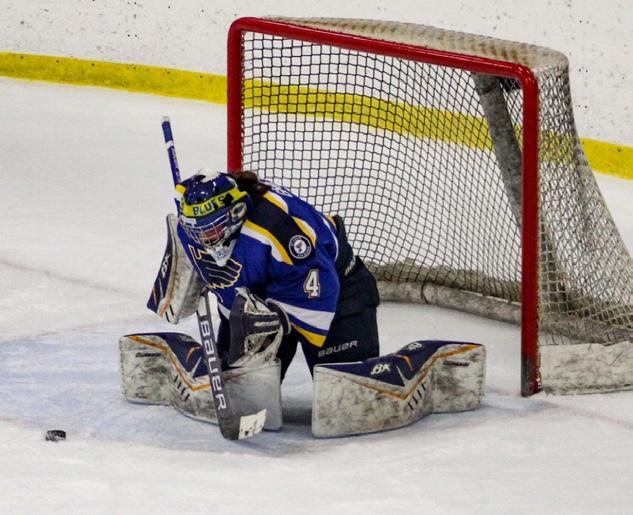
Sport: Ice Hockey Potential Major: Pre-physical therapy or Pre-athletic training Why they committed to this school: “I really liked the school, the coaches, but most of all I really liked the girls on the team.”
Avery
School: Harding University Sport: Volleyball Potential Major: Engineering Why they committed to this school: “I really liked the team there. They were super welcoming.”
School: The University of Texas Permian Basin Sport: Baseball Potential Major: Business
School: University Of South Carolina Aiken Sport: Volleyball
Potential Major: Marketing with a minor in psychology Why they committed to this school: “Honestly I just went for a visit not thinking anything of it, but after meeting the team and coaches it felt like my home away from home.”
Julia Coleman School: Texas State University Sport: Basketball Potential Major: Business or Communications
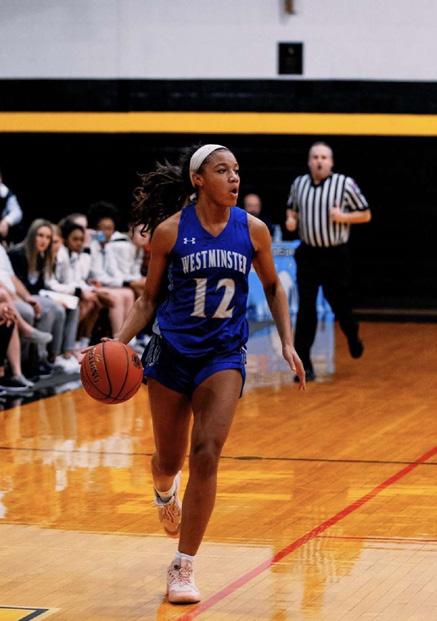
Why they committed to this school: “Their team and dynamic of the way they play is very good for me. I had a great experience with their coaches and I could totally see myself playing with them.”
Why they committed to this school: “I’ve always liked Texas a lot and they have a really strong baseball program.”

Muehleisen School: Montreat College Sport: Quick target shooting Potential Major: Environmental Science Why they committed to this school: “I liked the coach, I liked the school, and I liked the people at the school.’
Jadyn Patton School: Emmanuel College Sport: Clay Target Shooting Potential Major: Double major in Christian Ministries and psychology or something with education Why they committed to this school: “The Lord’s guidance in showing me the school and giving me the opportunity to see it, I just fell in love.”
